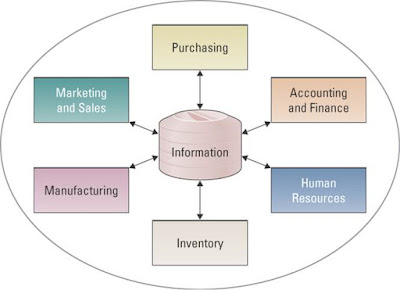MGT 300 CHAPTER 8 : ACCESSING ORGANIZATIONAL INFORMATION - DATA WAREHOUSE
LEARNING OUTCOMES :






- Describe the roles and purposes of data warehouse and data marts in an organization
- Compare the multidimensional nature of data warehouses with the two-dimensional nature of databases
- Identify the importance of ensuring the cleanliness of information throughout an organization
- Explain the relationship between business intelligence and a data warehouse
- HISTORY of DATA WAREHOUSING
- Data warehouses extend the transformation of data into information. In the 1990's executive became less concerned with the day-to-day business operations and more concerned with overall business functions. The data warehouse provided the ability to support decision making without disrupting the day-to-day operations.
- DATA WAREHOUSE FUNDAMENTALS
- Data warehouse : a logical collection of information to gathered from many different operational databases that can supports business analysis activities and decision-making tasks.
- Extraction transformation, and loading (ETL) : is a process that extract information from external and internal databases, transforms the information using a common set of enterprise definitions, and loads the information into a data warehouse
- Data mart : contains a subset of data warehouse information

- MULTIDIMENSIONAL ANALYSIS AND DATA MINING
- CUBE : is a common term for the representation of multidimensional information

-Data mining : is the process of analyzing data to extract information not offered by the raw data alone.
* Data mining tools: uses a variety of techniques to find patterns and relationships in large volumes of information and infers rules that predict future behavior and guide decision making
- INFORMATION CLEANSING or SCRUBBING
- Information cleansing and scrubbing is a process that weeds outs and fixes or discards inconsistent, incorrect or incomplete information.
- Contact information in an operational system

- Standardizing Customers name from Operational Systems

- Information cleansing activities

- Accurate and complete information

- BUSINESS INTELLIGENCE
- Business intelligence is information that people use to support their decision making efforts.
- Principle of BUSINESS INTELLIGENCE enablers include :
- TECHNOLOGY :
- The largest company today can create enterprisewide BI systems that compute and monitor metrics on virtually every variable important for managing the compony.
2. PEOPLE :
- Understanding the role of people in BI allows organizations to systematically create insight and turn these insights into actions
3. CULTURE :
- A key responsibility of executives is to shape and manage corporate culture. The extent to which the BI attitude flourishes in an organization depends in large part on the organization's culture.



black mamba
ReplyDelete